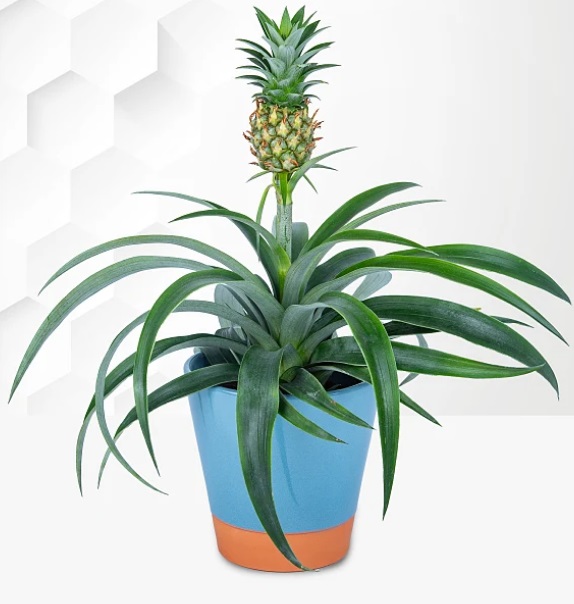
Tips for a Thriving Indoor Pineapple Plant
Pineapples aren’t just a tropical delight to enjoy in fruit salads—they can also make for striking indoor potted plants with proper care. Cultivating pineapple plants indoors allows you to enjoy their unique foliage and, with patience, even grow your own delicious fruit. In this guide, we’ll provide you with essential tips and techniques to care for your pineapple potted plant, ensuring it thrives and adds a touch of tropical charm to your home.
Choose the Right Container
Select a suitable container for your pineapple plant that provides good drainage and allows for sufficient root space. A container that is at least 12 inches in diameter and has drainage holes at the bottom is ideal. Opt for a lightweight, breathable potting mix formulated for cacti and succulents, as pineapples prefer well-draining soil.
Provide Adequate Sunlight
Pineapple plants thrive in bright, indirect sunlight, so place your potted plant near a south- or west-facing window where it can receive plenty of natural light throughout the day. If natural light is limited, supplement with a grow light to ensure your pineapple plant receives the illumination it needs to grow healthy foliage.
Maintain Proper Watering
While pineapple plants prefer slightly moist soil, they are susceptible to root rot if overwatered. Allow the top inch of soil to dry out between waterings, then water thoroughly until excess water drains from the bottom of the pot. Avoid letting the plant sit in standing water, as this can lead to root rot. During the winter months, reduce watering frequency to prevent waterlogged soil.
Control Humidity Levels
Pineapple plants thrive in moderate to high humidity, so it’s essential to maintain adequate moisture levels around the plant. Place a humidity tray filled with water and pebbles beneath the pot to increase humidity levels, especially during the dry winter months when indoor air tends to be drier. Misting the foliage with water occasionally can also help boost humidity around the plant.
Fertilize Regularly
Feed your pineapple plant with a balanced, water-soluble fertilizer formulated for foliage plants every two to four weeks during the growing season (spring and summer). Dilute the fertilizer to half strength to avoid overfertilization, which can lead to nutrient imbalances and foliage burn. Reduce fertilizer applications in the fall and winter when the plant is in a dormant phase.
Monitor for Pests and Diseases
Keep an eye out for common pests such as aphids, mealybugs, and scale insects, which can infest pineapple plants and cause damage to foliage. If you notice any signs of pest infestation, gently wipe the affected leaves with a soft cloth dampened with water or insecticidal soap. Additionally, inspect the plant regularly for signs of fungal diseases such as leaf spot or root rot, and promptly address any issues to prevent spreading.
Encourage Fruit Production (Optional):
If you’re interested in growing your own pineapple fruit, you can encourage flowering and fruit production in your potted plant. Once the plant reaches maturity (usually after two to three years), it will produce a central stalk with a cluster of purple flowers. After flowering, the plant will produce a pineapple fruit. Provide consistent care and patience, as it may take several months for the fruit to mature.
By following these care tips, you can cultivate a healthy and thriving pineapple potted plant that adds a touch of tropical flair to your indoor space. With proper care and patience, you may even be rewarded with the sweet satisfaction of homegrown pineapple fruit in the future. Enjoy the journey of nurturing your pineapple plant and witnessing its growth and development as it brings a taste of the tropics into your home.
